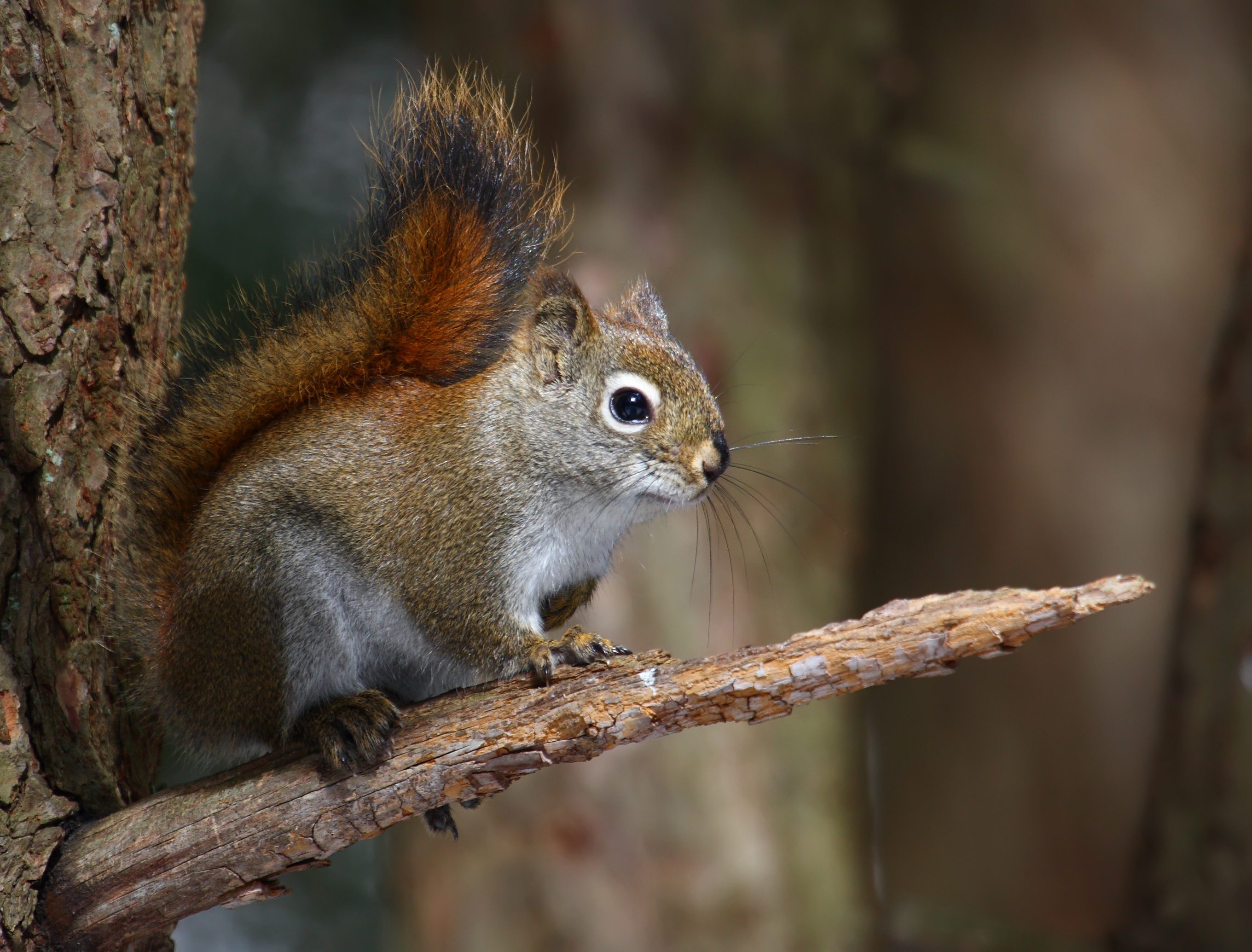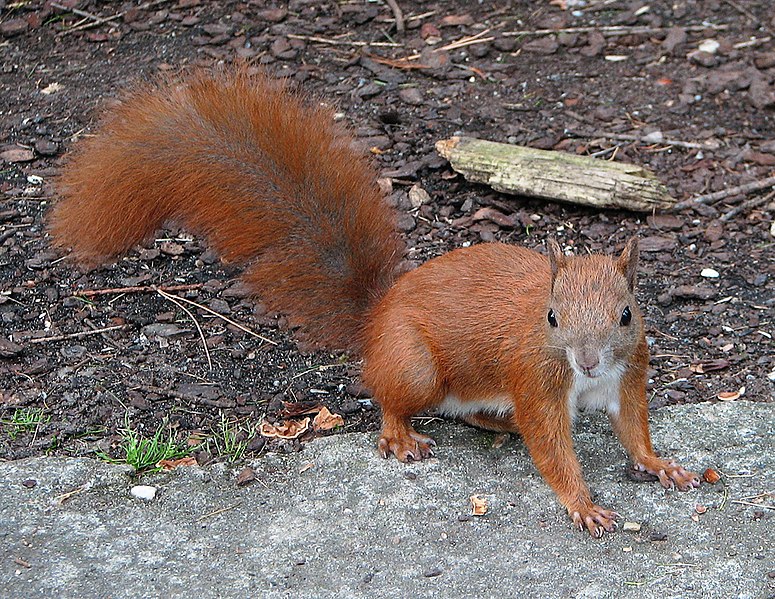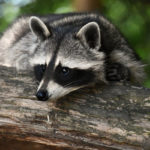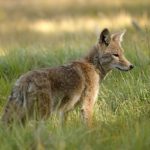Baby squirrels are called kits or kittens.
Ever found yourself wondering about the tiny, adorable creatures scampering around your backyard or local park? Well, you’re in for a treat! Today, we’re diving into the delightful world of baby squirrels. You might be surprised to learn what these little furballs are called and just how fascinating their early lives can be.
Imagine stumbling upon a nest of baby squirrels, eyes barely open, and tiny bodies snuggled together. Intrigued? Good! Because by the end of this article, you’ll be well-versed in all things baby squirrels—from their cute-as-a-button names to the incredible journey they embark on from birth to independence. So, let’s jump right in and uncover the charming secrets of these pint-sized adventurers!
Key Takeaways
- Baby squirrels are called kits or kittens.
- Discover the stages of a baby squirrel’s development.
- Learn how mother squirrels care for their young.
- Fun facts and trivia about baby squirrels.
The Name Game: What Are Baby Squirrels Called?
So, what exactly do we call these tiny bundles of joy? Drumroll, please… Baby squirrels are called kits or kittens! Yep, just like the playful felines we know and love, these little ones share a name that’s as cute as they are.
Why kits or kittens, you ask? Well, the term “kit” is a common name for many small mammals’ offspring, including foxes and rabbits. The word “kitten” naturally extends from there, adding an extra layer of endearing charm to these critters. No matter what you call them, one thing’s for sure: baby squirrels are downright adorable.
But wait, there’s more! In different regions or among various squirrel species, you might come across other names or nicknames for these little guys. However, “kits” and “kittens” are the most widely recognized and used terms. It’s fascinating how a simple name can evoke such a vivid image of playful, curious, and ever-so-slightly mischievous creatures.
Now that we know what to call them, let’s delve into their early life stages and discover how these kits grow up to be the nimble and clever squirrels we see darting through the trees.

The Early Days: From Birth to Independence
From the moment they are born, baby squirrels, or kits, embark on an incredible journey of growth and discovery. Let’s take a closer look at their early days and how they transform from tiny, helpless newborns into agile, curious adventurers.
Birth and Early Development
When baby squirrels first enter the world, they are incredibly small and vulnerable. Kits are born hairless, with their eyes tightly shut, and are completely dependent on their mother for warmth and nourishment. At birth, they weigh just about an ounce and fit snugly in the palm of your hand.
During the first few weeks, these little ones experience rapid development. Around three weeks old, their fur starts to grow, giving them that characteristic soft and fuzzy appearance. By the time they are four weeks old, their eyes begin to open, revealing a world full of new sights and opportunities for exploration.
Growing Up: Learning to Climb and Forage
As baby squirrels grow, their physical and behavioral transformations are nothing short of remarkable. By six to eight weeks old, they start to venture out of the nest, albeit cautiously. This period is crucial for learning the essential skills they need to survive.
Climbing is one of the first major milestones. Watching a kit take its first, wobbly steps up a tree trunk is both heartwarming and entertaining. With each attempt, they become more adept, honing their balance and agility.
Playtime plays a vital role in their development. Through play, baby squirrels practice pouncing, chasing, and wrestling with their siblings. These activities are not only fun but also critical for developing the coordination and strength needed for climbing, jumping, and escaping predators.
During this phase, they also begin to forage for food. While still nursing, they start nibbling on solid foods, experimenting with nuts, seeds, and fruits. This gradual introduction to their adult diet helps prepare them for the independent life that lies ahead.
The journey from birth to independence is full of challenges and learning experiences for baby squirrels. Each step brings them closer to becoming the agile, resourceful creatures we see darting through the trees. But their adventure doesn’t end here. Next, we’ll explore how mother squirrels care for their young, ensuring they grow up strong and capable.
Mama Knows Best: How Mother Squirrels Care for Their Young
Mother squirrels are the ultimate multitaskers, tirelessly working to ensure their kits grow up safe, healthy, and ready to face the world. Let’s dive into the incredible ways these dedicated moms care for their young.
Building the Nest: A Safe Haven
Every great adventure starts with a safe home, and for baby squirrels, that home is a cozy nest. Mother squirrels are meticulous builders, creating nests known as dreys or dens. Dreys are typically found in tree branches, constructed from twigs, leaves, and moss, forming a snug, weather-resistant haven. Dens, on the other hand, are usually located in tree cavities or abandoned woodpecker holes, providing extra protection from the elements.
The mother squirrel ensures the nest is not only secure but also comfortable. She lines it with soft materials, creating a warm and inviting space for her kits. This nest serves as the primary base where the young squirrels spend their early weeks, growing and developing under their mother’s watchful eye.
Feeding Time: From Milk to Solid Food
In the first few weeks of life, baby squirrels rely entirely on their mother’s milk for nutrition. Nursing sessions are frequent, ensuring the kits receive all the necessary nutrients to support their rapid growth. The mother’s milk is rich and nourishing, perfectly designed to help her babies develop strong bones and healthy bodies.
As the kits grow older, around six weeks, the mother gradually introduces them to solid foods. She brings back a variety of foraged items—nuts, seeds, fruits, and even fungi—to the nest, encouraging her kits to sample these new foods. This weaning process is critical as it prepares the young squirrels for their future independent foraging adventures.
Teaching Survival Skills
Mother squirrels are also excellent teachers, imparting essential survival skills to their young. She demonstrates how to find food, navigate the treetops, and recognize potential dangers. By watching and imitating their mother, the kits learn the vital techniques needed to thrive in the wild.
One of the most fascinating aspects of this teaching process is the communication between the mother and her kits. Squirrels use a variety of vocalizations and tail movements to convey messages, from warnings about predators to calls for feeding time. This form of communication helps the young squirrels understand their environment and develop their own social skills.
Protecting the Kits
A mother squirrel’s protective instincts are second to none. She constantly monitors the nest for threats, ready to fend off predators or relocate her kits if necessary. In case of danger, she can carry each kit, one by one, to a safer location, showcasing her strength and determination.
The bond between a mother squirrel and her kits is a testament to nature’s incredible maternal instincts. Her efforts ensure that her young have the best possible start in life, equipping them with the skills and knowledge they need to navigate their world. Now that we’ve seen the lengths a mother squirrel goes to for her kits, let’s dive into some fun facts and trivia about baby squirrels that are sure to delight and amaze you!
Fun Facts and Trivia About Baby Squirrels
Ready for some squirrel trivia that will make you the star of your next nature chat? Here are some fascinating and fun facts about baby squirrels that are sure to surprise and delight you!
Fact 1: Squirrel Twins and Triplets
While it might seem like a single baby squirrel is enough to keep a mother busy, did you know that mother squirrels often give birth to twins or even triplets? In fact, it’s not uncommon for a squirrel nest to have three or more kits! These siblings grow up together, learning from each other and providing endless entertainment with their playful antics.
Fact 2: Squirrels Have Excellent Memories
Even as babies, squirrels exhibit an impressive ability to remember where they’ve hidden their food. This skill, known as scatter hoarding, begins to develop early in their lives. By observing their mother and practicing hiding nuts and seeds, young squirrels hone their memory skills, which are crucial for their survival.
Fact 3: Squirrel Communication
Baby squirrels are surprisingly vocal. They communicate with their mother and siblings using a variety of sounds, including chirps, squeaks, and purrs. Each sound has a specific meaning, whether it’s calling for food, alerting to danger, or simply playing. These early vocalizations are essential for their social development and help them integrate into the squirrel community.
Fact 4: The Tail Tale
One of the most distinctive features of a squirrel is its bushy tail, and baby squirrels are no exception. Their tails are not just for show; they serve multiple purposes. From helping with balance while climbing to acting as a blanket to keep warm, and even as a communication tool, the tail is an essential part of a squirrel’s life right from the start.
Fact 5: Fast Learners
Baby squirrels grow and learn at an astonishing rate. Within just a few weeks, they go from being completely dependent on their mother to adventurous little explorers. By eight weeks old, they’re already practicing climbing, jumping, and foraging—skills that are critical for their independence.
Fact 6: Lifespan and Growth
While their early months are packed with growth and learning, did you know that squirrels can live quite long lives for small mammals? In the wild, they can live up to six years, but in captivity, with fewer predators and ample food, they can live up to 20 years. This extended lifespan allows them to refine their survival skills and contribute to the ecosystem for many years.
These fun facts highlight just how remarkable baby squirrels are. From their early days in the nest to their rapid development and fascinating behaviors, there’s so much to appreciate about these tiny yet mighty creatures. Next time you spot a squirrel scampering up a tree, you’ll have a newfound admiration for the journey it took to get there!
Conclusion
And there you have it—a delightful journey through the early lives of baby squirrels, from their adorable names to their incredible development and the unwavering dedication of their mothers. These tiny, playful kits, or kittens, grow up in nests meticulously built for their safety and comfort, learning essential survival skills under the watchful eyes of their mothers.
We’ve explored the fascinating stages of their growth, from hairless newborns to adventurous young climbers, and discovered how they transition from a diet of nourishing milk to solid foods. We’ve also uncovered fun and surprising facts, like their impressive memories, vocal communication, and the many uses of their bushy tails.
So, next time you’re out and about, keep an eye on the trees and perhaps you’ll spot a squirrel family in action. Remember, these little creatures have an amazing story of growth, learning, and survival. Share your newfound knowledge with friends and family, and inspire others to appreciate the wonder of wildlife in their own backyards.
Whether you’re a curious nature lover, a parent looking to educate your kids, or just someone who enjoys a good animal story, we hope this exploration of baby squirrels has brought a smile to your face and a spark of curiosity to your mind. Now go out there and celebrate the incredible world of squirrels!














